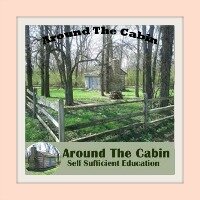Most of us are ready to invest a good amount for landscaping and gardening to give our home more beauty and well…bounty! But we fail to prune when the plants needed it, and then our highly invested landscape (both time, money and energy) looks more terrible than ever AND our edible bounty isn’t so bountiful. So this is a good time to know about a few QUICK & SIMPLE gardening tips for better maintenance of your landscape.
Pruning:
Pruning plays an important role in garden maintenance. If you commit any mistake while pruning, don’t lose your heart because its like a bad haircut, it is going to grow again.
Watering:
During summer, you may experience high humidity, which might result in lot of problems in your garden. To get your plants nice and dry, tuck them in for night. In addition to this, watering in the evening may be avoided to prevent damage to the plants.
Water in the morning
Get rid of Powdery mildew:
Powdery mildew is the common fungus mostly affecting your ornamental plants, but also some of our veggies. This will create white film on the leaves of the plants in your garden. Even other ornamental plants such as Sand cherry and Dogwoods can also getting affected with this fungus. Efficient gardening is necessary to curtail the growth of this fungus.
The key to preventing it is planting mildew-resistant or mildew- tolerant varieties. Resistant varieties get less mildew than susceptible varieties; tolerant varieties may get some mildew, but it shouldn’t affect the performance of the plant. Also place your plants so they get good air circulation and a good amount of sunlight so that they have a chance to dry off.
To control minor infestations, pick off affected plant parts and either compost them or bag them tightly and put them in the trash.
Powdery Mildew
Homemade Sprays
To try this at home, mix 1 part milk with 9 parts water and spray the stems and tops of leaves with the solution. Reapply after rain.
OR
Spraying leaves with baking soda (1 teaspoon in 1 quart water) raises the pH, creating an inhospitable environment for powdery mildew.
Prevention of Pythium Blight:
If you’re in the north and also having perennial Rye grass, then you ought to be very careful not to leave your grass wet at night. A dreadful fungus called Pythium Blight may take its upper hand, if you leave your lawn wet in the night because this fungus loves to grow in high humid conditions mostly at night.
Pythium Blight
Pythium blight can easily be seen in the early morning. You can easily appreciate the fungus on the top of the lawn as white cotton candy. You can easily notice this fungus mainly along driveways and walks, where the soil is moist. Pythium blight can easily be controlled by watering in the day at the earliest possible time.
Fire Blight:
Fire Blight, yet another culprit prefers to grow well during summer than any other season. This fungus prefers to attack Pyracantha, cotoneasters, crabapple trees, and Apple trees. The presence of Fire Blight can easily be visualized once the any one of the branches of the plant turns red and dies. This Fire Blight can be prevented little by pruning the affected branch and removing it from the main plant as far as possible.
It is also important that the cut branches should be burnt since Fire Blight is contagious and also wash or dip the projected shears by using alcohol in order to prevent the spread of the deadly fungus to other parts of the branch.
Homemade Remedy:
Put on gloves to protect your hands from the bleach.
Prune all branches with fire blight off with shears. Dip the shears in the bleach solution after each cut so as not to spread the infection. Cut off all branches at least 12 inches below the last branch that is wilted and discolored. Dispose of the branches in an area that is at least 100 feet away from the tree.
Open a 1-gallon garden sprayer by turning the lid counter clockwise. Pour in 6 cups of water and then 4 cups of white vinegar. Close the lid in a clockwise direction. Shake the sprayer gently to mix the contents. Pump the handle on the top of the sprayer to pressurize the contents.
Put on safety glasses. Point the nozzle at your tree and depress the lever on the wand to spray the tree from bottom to top and underneath the leaves. Step back from the tree and spray the vinegar solution from top to bottom until the leaves are dripping. Spray the tree trunk thoroughly.
Things You Will Need
- Gloves
- Large bowl
- Measuring cup
- 4 cups water
- 1 cup bleach
- Spoon
- Shears
- Gallon sprayer
- 6 cups water
- 4 cups white vinegar
- Safety glasses
Tip
- Control aphids and insects that spread fire blight on your trees.
- High nitrogen fertilizers encourage new lush growth that attracts fire blight bacteria.
- Remove dead leaves and plant debris at the base of fruit trees. Fungal spores thrive in dead matter.
- Place organic mulch around the bottom of fruit trees to keep any fungal spores from splashing up on your tree in heavy rains or when watering them
Shotgun fungus:
Shotgun Fungus
A little gem like fungus, which prefers to grow in mulch and tends to swell, has been termed as Shot gun Fungus (Artillery Fungus). This fungus can fly up to 8 feet in the air and will spatter your house with tiny brown specks and once they stick to your house or windows, they stick like glue. Most of us suspect the spiders and aliens for this tiny brown speck.
Sometimes very little can be done to control nuisance fungus other than to spade the mulch into the surface soil layer followed by soaking with water. Another option is to remove the mulch, place it in a heap after thorough wetting to allow for self-heating to occur (110-140 degrees F). This will kill nuisance fungus. If fresh dry mulch is placed on top of mulch colonized by nuisance fungi, the problems may occur again the following year or even earlier.
The best control strategy for homeowners and landscapers is to purchase composted products low in wood content. Fresh, finely ground woody products should be avoided for many reasons unless composted first. Coarse fresh woody products are much less likely to cause problems unless applied too deep. It is important to soak all mulches immediately after they have been applied. Generally, mulches should not be applied to a depth greater than two inches. Mulches and composts applied in this manner provide many types of beneficial effects rather than nuisance problems, or worse, plant diseases. Sour mulches should be avoided altogether.
This article may be hopping around the following Blog Hops: (mis)Adventures Mondays Blog Hop, The HomeAcre Hop, Wildcrafting Wednesday, Homestead Blog Hop, From the Farm Fridays, Simple Saturdays Blog Hop, Simple Life Sunday Blog Hop.
Copyright Notice: This article may from time to time be contributed to third-party sites, but it is COPYRIGHTED, and it may not be used without my written permission. If you are interested in any of my articles, please contact Kat Yorba; Author and owner of Simply Living Simply directly for republishing information.
Affiliate Notice: Many of my blog posts contain affiliate links. Purchasing through an affiliate link does NOT increase the price you pay but allows me to keep blogging, sharing and bringing you great content.
Medical Disclaimer Notice: Nothing in this post is to be construed as medical advice, simply a sharing of things that have worked for me &my family. If you have any symptoms of serious illness, taking medication, pregnant or nursing, or have never worked with herbal materials or essential oils before, please consider consulting a medical professional before use. I am unable to offer advice for your particular medical situation; please ask your Doctor, Nurse Practitioner or Naturopath for further guidance. The statements made here have not been approved by the Food & Drug Administration. These statements are not intended to diagnose, treat, cure or prevent disease. This notice is in accordance and required by the Federal Food, Drug & Cosmetic Act.




























[…] This article was written by Kat from Simply-Living-Simply and can be viewed here. […]